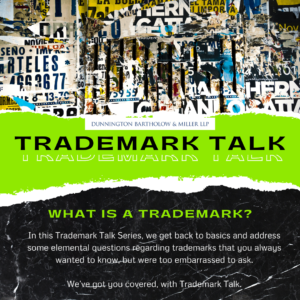A trademark can be a word, phrase, symbol, design, sound, smell, or audio visual movement. When you hear the term “trademark,” it is often used to describe not only trademarks but service marks as well. A service mark is a mark used for services; a trademark is a mark used on goods.
The purpose of a trademark is to identify your goods and to protect your brand from counterfeit products and fraud. Trademarks are registered with the federal government and trademark law focuses on preventing confusion among consumers. For this reason, the central question in determining whether a trademark infringes on the rights of another trademark is whether the infringing mark is confusingly similar to the registered mark.
For example, imagine a long row of cereal boxes arranged next to each other in a grocery store. If all the cereal boxes used the same colors, sizes, and shapes, then it would be difficult to distinguish between them. A consumer could become confused and pick the cereal they do not want. Trademark registration and federal law protects the consumer by giving each trademark limited property rights to brand owners. Therefore, when the consumer browses that cereal aisle, the consumer can easily identify the brand of cereal it wants and not be confused by another product that it never intended to purchase.
However, trademark protection is not unlimited. While a cereal company might use a pink leprechaun logo as a trademark on a strawberry-flavored cereal, it would not prevent someone else from using a similar design for computer repair services. This is primarily because the likelihood of creating confusion among consumers is very low.
Trademark law will not protect marks that are descriptive of the goods or services. Businesses should use “strong” trademarks that are unique to their business. Unfortunately, descriptive words are often preferred by new businesses because descriptive words describing the business might attract new consumers. In the long term, however, it is always better to rely on unique, as opposed to descriptive, trademarks and let a good marketing campaign attract consumers to you.
Questions about trademarks? Contact our Trademark Practice Group Chair, Olivera Medenica, at [email protected].



